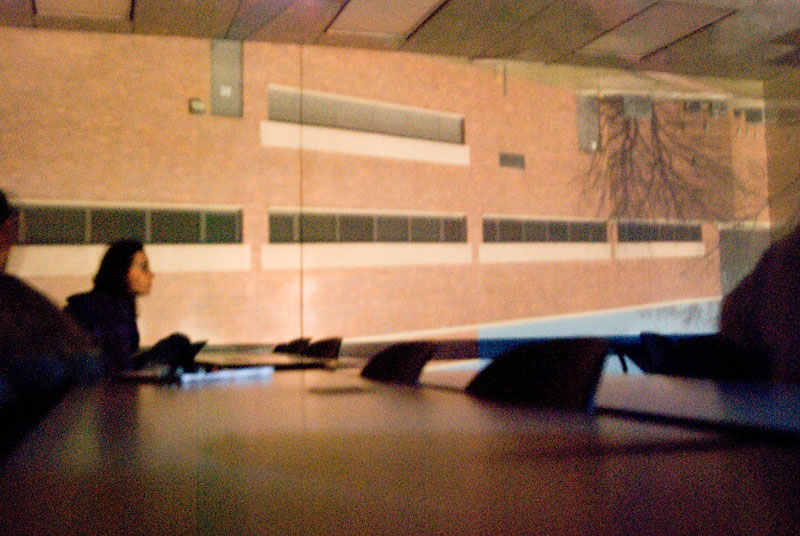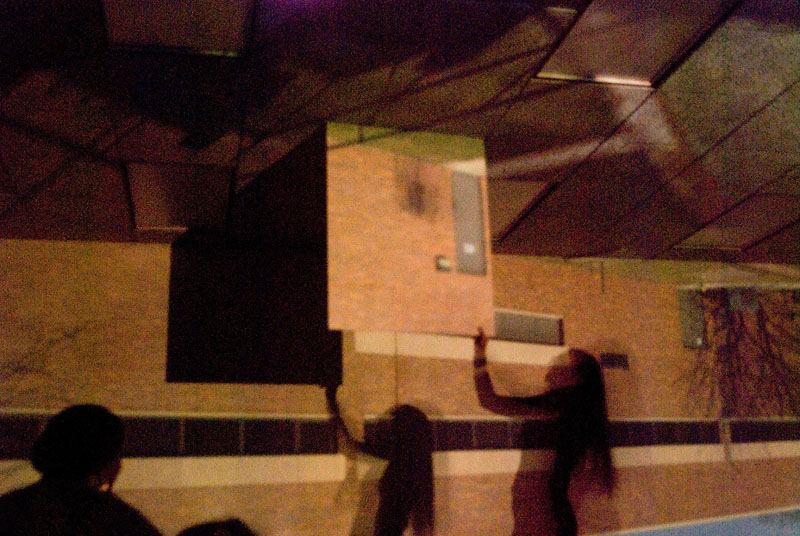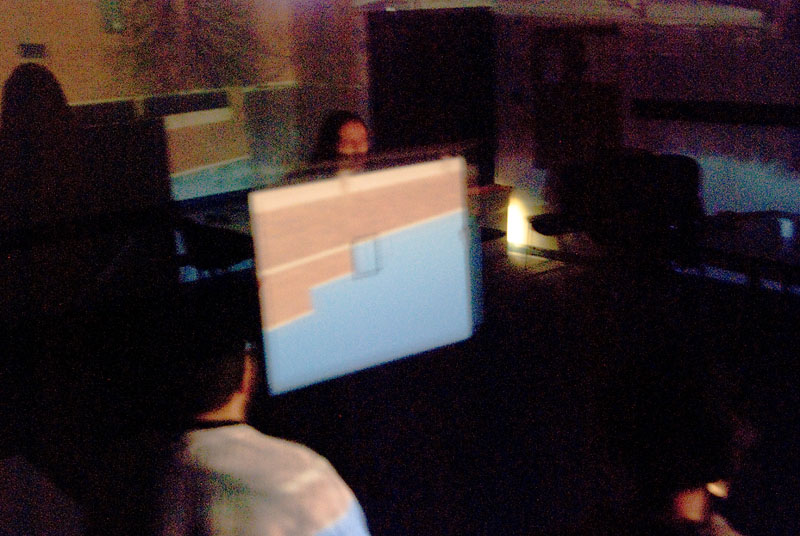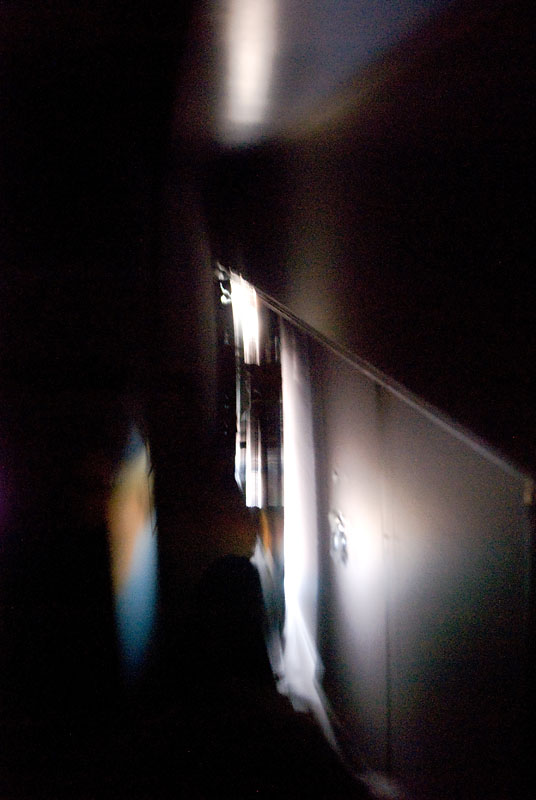
At an art conference in Chicago today, I met a person who teaches photography at Wilbur Wright College. She reminded me of something I did with my intermediate class at Wright several years ago. Apparently the activity left such an impression on students that they still talk about it to this day (I haven’t taught at Wright for a few semesters now). We turned a classroom into a camera, i.e. we made a camera out of a classroom. The common term for this sort of thing is camera obscura, translated “room dark”, from latin. It’s strange that for short we now call all of our cameras, well, rooms.
In the second week of View Camera class at Oakton Community College, on 2/3/2010, I took my students across campus to a room that was perfect for a camera obscura. It’s pretty easy to do and it demonstrates how all cameras work. Here’s how you do it:
- Find a room with closed doors, a nice view (facing a busy street), white walls, and very few windows, preferably just one.
- Completely black out the room at noon on a sunny day. No light should be present anywhere – not even from an appliance or watch. Cover the windows and cracks around doors using a material that is light-proof.
- Put a round dime-sized hole in whatever is covering the window. I like to use black foam-core board – it’s easy to cut and put in place. You can use a larger hole, but it will render the image slightly blurry.
- Wait 5 minutes and look around, especially on the ceiling and wall opposite the hole. You’ll see what’s outside… upside down and in full color!

This semester at Oakton I asked one of the students to photograph the event (thanks Danny Lee!) using a digital camera borrowed from the photography area. In the first image (above) you can see a student sitting at the end of a table on the left side next to a large white wall, with an image of the building across from us projected upside down. In the second image (left) I’m holding a white board to make a part of the image clearer. One of the students went outside and is waving his arms at us. He is a shadowed figure, standing next to a gray door on the board I’m holding. If you do decide to leave the room, you won’t be able to see anything once you return for quite some time until your pupils adjust again.

In the third image (right) I’m holding the same white board with a small black rectangle (5″x4″) drawn on it, demonstrating the effects of rear standard movements were they to be done on a regular view camera. These camera movements affect perspective distortion, and are often used to correct distortion in architectural photography. Just by tilting or swinging the back of the camera one can make the lines of the building appear parallel to each other. The small black rectangle is the same size as the film we’re using in class, and the board is being held up right at the edge of the upside-down roof with the blue sky clearly visible right below it.

In the next image (left), the same board is held up right in front of the hole. The hole now has a lens in it, and the board has an image circle projected in full color.
The first time I had my class do this activity back at OSU in Columbus, OH, in 2003, our classroom was on the 4th floor looking out on a large campus square where students walked in all directions between classes. Seeing that it was the largest student population in the country (I believe they have over 50,000 undergrads alone), hundreds of tiny dark figures with matching shadows walked upside-down across the ceiling of our classroom in all directions, like ants.
I’ve done this activity at Oakton for several semesters now, starting with the History of Photography classes back in 2006. One summer I taught in a classroom that didn’t lend itself to the camera obscura, so a student decided to try one in his apartment with a friend of his. Here is the video he made. Because the video is sped up, only two of the stills show the camera obscura effect; you’ll need to pause it right there!
Abelardo Morell created an entire body of work based on the camera obscura. What I like about his photographs is the juxtaposition of the mundane with the exotic. All of the images are shot in mundane settings: hotels, bedrooms, bathrooms, etc. Yet the views he chooses are often clichéd postcard settings, such as the Eiffel Tower, or Times Square, or the St. Louis Arch. He shows us views that most of us are exposed to via postcards rather than life, something that is picture-perfect in our memories, and that most of us will probably see in a photograph before we see it in “real life.” Yet in his camera obscuras, these images are upside down, distorted, and raw. They are made real again. I see these camera obscura images as a reminder of the powerful function and influence photography has on our psyches and in our culture.